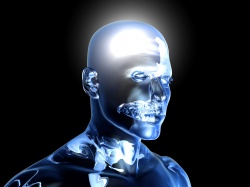New imaging technique pinpoints changes in brain connectivity following mTBI
A new imaging technique can identify the specific changes in neural communication that can disrupt functional connectivity across the brain as a result of mild traumatic brain injury (mTBI).

This information could help explain why many patients with a diagnosis of mTBI will experience physical, cognitive, and psychosocial symptoms that may persist, according to an article published in Brain Connectivity, a peer-reviewed journal from Mary Ann Liebert, Inc., publishers. The article is available free on the Brain Connectivity website until July 10, 2015.
Chandler Sours, Haoxing Chen, Steven Roys, Jiachen Zhuo, Amitabh Varshney, and Rao Gullapalli, University of Maryland School of Medicine and the Magnetic Resonance Research Center (Baltimore, MD) and University of Maryland College Park describe their innovative approach to the advanced imaging technique called resting state functional magnetic resonance imaging (rs-fMRI). Instead of relying on a single frequency range to analyze functional connectivity in the brain, the researchers measured multiple frequency ranges using a technique known as discrete wavelength decomposition.
The article "Investigation of Multiple Frequency Ranges Using Discrete Wavelet Decomposition of Resting State Functional Connectivity in Mild Traumatic Brain Injury Patients" reports the differences in the strength and variability of communication across neural networks in the brains of patients diagnosed with mTBI who did or did not have post-concussive syndrome. The authors demonstrate alterations in functional connectivity in both groups of patients during the acute and chronic stages of injury, differences between the two groups, and recovery of connectivity over time.
"The consequences of head injury are difficult to detect with conventional CT and MRI diagnostic methods. This is especially true in the weeks to months following the traumatic event," says Christopher Pawela, PhD, Co-Editor-in-Chief of Brain Connectivity and Assistant Professor, Medical College of Wisconsin. "Dr. Sours and her colleagues are on the forefront of developing a new MRI technique to pinpoint brain injury in the critical window after the traumatic event has occurred."
Source: Mary Ann Liebert, Inc./Genetic Engineering News
11.06.2015











